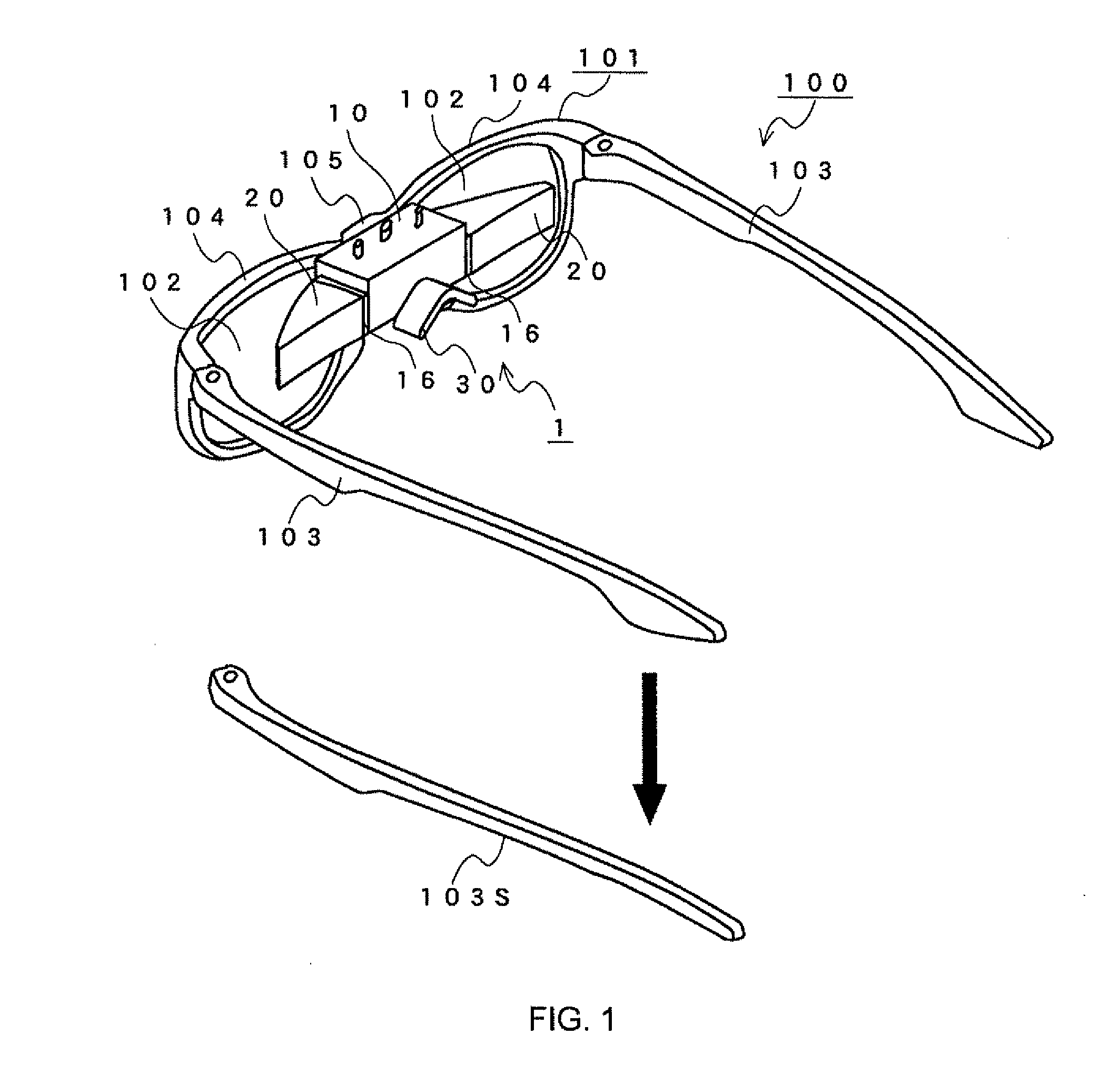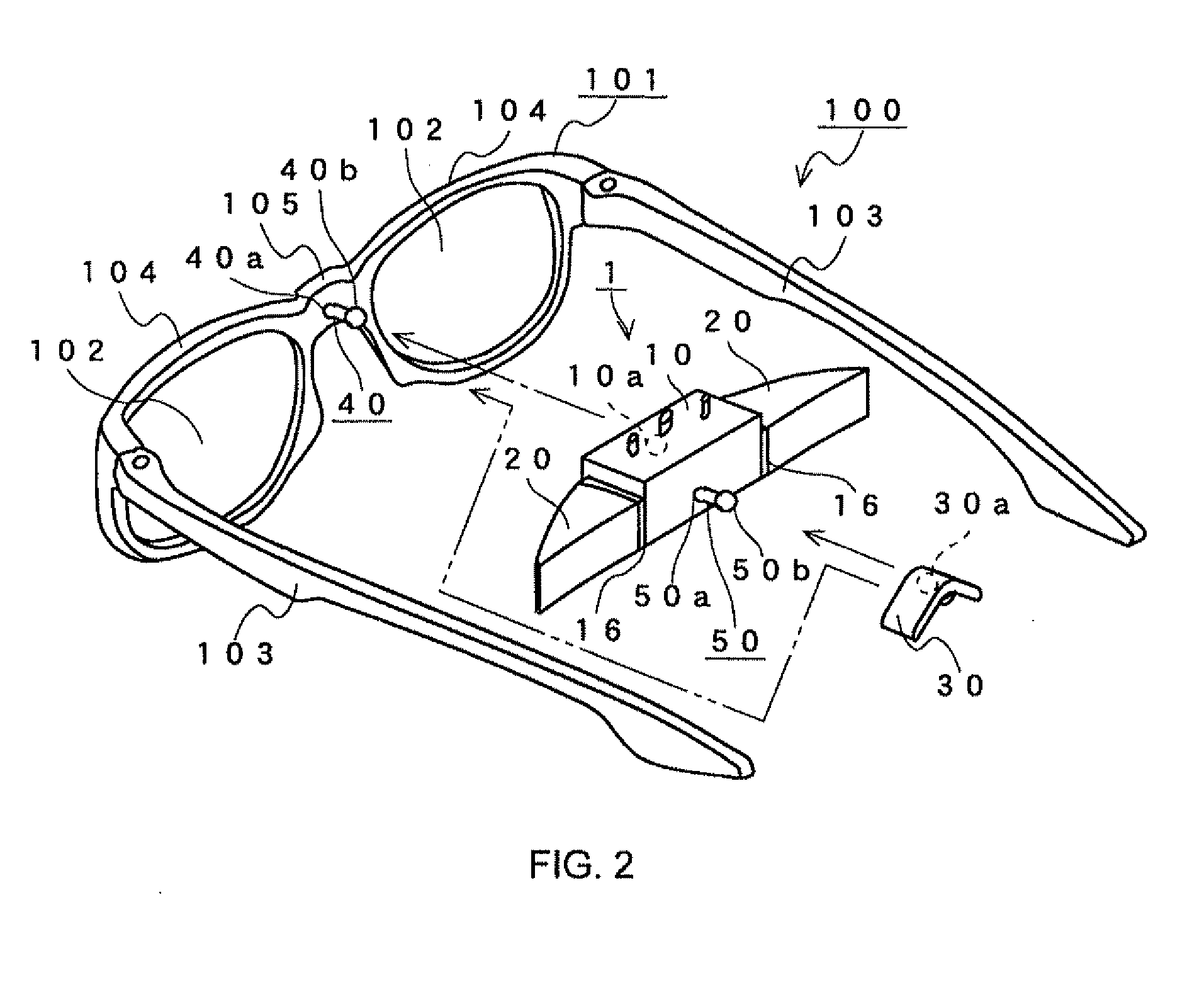Head-mounted display
a display and head mount technology, applied in the field of head mount displays, can solve the problems of inability to achieve the commercialization of hmds, the difficulty of downsizing hmds is the most problematic, and the design and fashion of hmds are inferior
- Summary
- Abstract
- Description
- Claims
- Application Information
AI Technical Summary
Benefits of technology
Problems solved by technology
Method used
Image
Examples
Embodiment Construction
[0045]In the following, a preferred embodiment of the present invention is described in detail with reference to figures.
[0046]A head mount display 1 in this embodiment is an attachment-type HMD used while being attached to eyeglasses 100 having an eyeglass frame shape as illustrated in FIG. 1. In this embodiment, the head mount display 1 is attached on the rear of the eyeglasses 100. During use, the head mount display 1 is situated in a space between the user's face and the eyeglasses 100. Therefore, those other than the user are less likely to find the presence of the head mount display 1.
[0047]The eyeglasses 100 correspond to an attachment member of the present invention, and has the same structure as that of conventional pairs of eyeglasses, in which eyeglass lenses 102 are fitted to an eyeglass frame 101. Note that, the eyeglass lenses 102 may be prescribed or unprescribed, and may be transparent-and-colorless or transparent-and-colored. The eyeglass frame 101 is provided with ...
PUM
 Login to View More
Login to View More Abstract
Description
Claims
Application Information
 Login to View More
Login to View More - R&D
- Intellectual Property
- Life Sciences
- Materials
- Tech Scout
- Unparalleled Data Quality
- Higher Quality Content
- 60% Fewer Hallucinations
Browse by: Latest US Patents, China's latest patents, Technical Efficacy Thesaurus, Application Domain, Technology Topic, Popular Technical Reports.
© 2025 PatSnap. All rights reserved.Legal|Privacy policy|Modern Slavery Act Transparency Statement|Sitemap|About US| Contact US: help@patsnap.com



